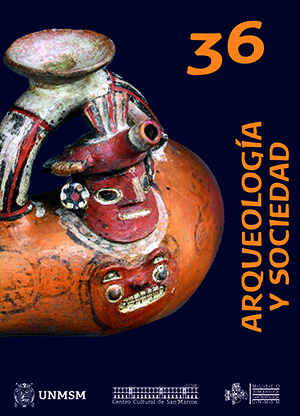The use of sail for pre-Hispanic navigation off the Peruvian coast and its importance in the Andean world
DOI:
https://doi.org/10.15381/arqueolsoc.2022n36.e21976Keywords:
Prehispanic navigation, log raft, sails, Spondylus, Central AndesAbstract
The main goal of the research was to study the use of pre-Hispanic sails and its implications in indigenous navigation. The iconographic analysis, the corresponding ethnohistorical and ethnographic study were carried out. It was concluded that in 1100 AD new figures appear represented in the iconography of the Central Andes; these are the log rafts with mast and sail, which correspond mainly to the Lambayeque and Chimú cultures. Many of these sails have a triangular design, also called latinas, which are ideal for sailing with headwinds. In the 16th century the main area of the sailing log rafts extended from Manta in Ecuador to the north coast of Peru, from Tumbes to Sechura; tradition that must have originated centuries before the arrival of the Spanish, expanding further south allowing the navigation of the Lambayeque and Chimú cultures to Ecuador.
Downloads
Published
Issue
Section
License
Copyright (c) 2022 Javier Erison Ruiz Romero

This work is licensed under a Creative Commons Attribution 4.0 International License.
THE AUTHORS RETAIN THEIR RIGHTS:
a. The authors retain their trademark and patent rights, and also on any process or procedure described in the article.
b. The authors retain the right to share, copy, distribute, perform and publicly communicate the article published in the Arqueología y Sociedad (for example, place it in an institutional repository or publish it in a book), with an acknowledgment of its initial publication in the Arqueología y Sociedad.
c. The authors retain the right to make a subsequent publication of their work, to use the article or any part of it (for example: a compilation of their works, notes for conferences, thesis, or for a book), provided that they indicate the source. of publication (authors of the work, journal, volume, number and date).






